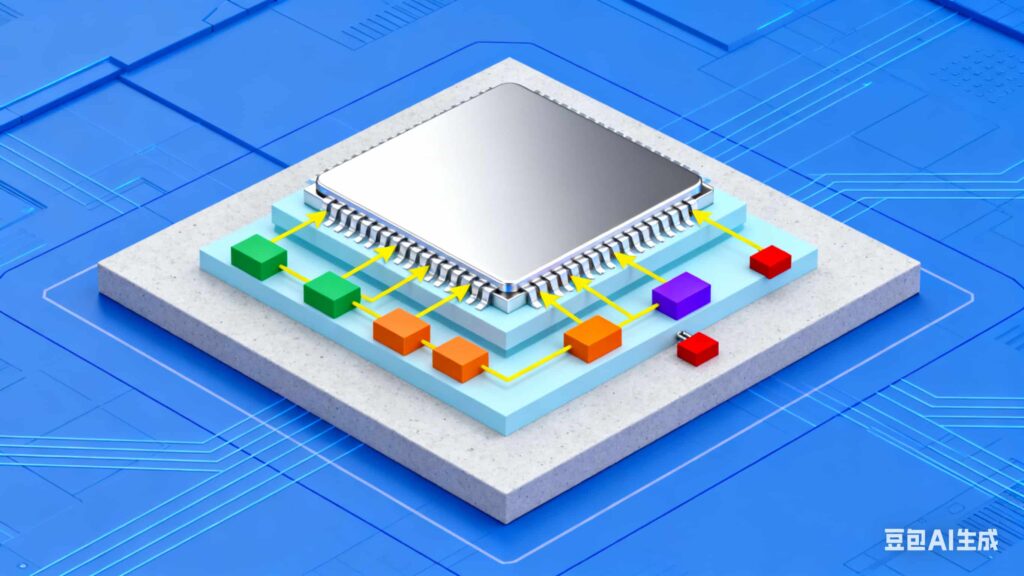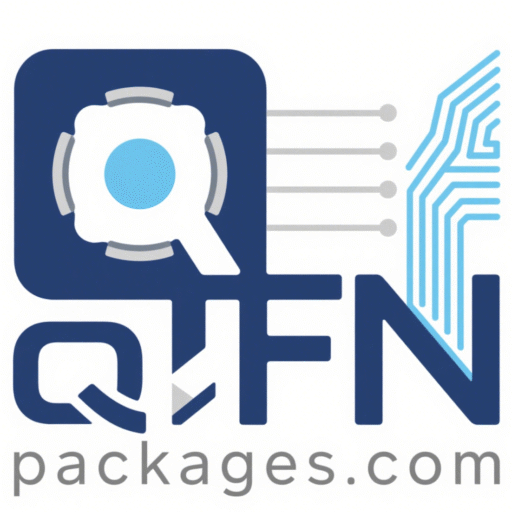Semiconductor Ceramic Chips: Materials, Manufacturing, Applications & Future Trends | QFN Packages

Semiconductor Ceramic Chips: Properties, Manufacturing, Applications, and Future Trends
Introduction
Semiconductor ceramic chips represent a unique class of electronic components that combine the electrical properties of semiconductors with the mechanical, chemical, and thermal advantages of ceramics. Featuring high-temperature resistance, excellent mechanical strength, and low dielectric loss, these chips are widely used in sensors, communications, power electronics, and automotive electronics. They have become a key foundation for high-end electronic systems.
1. Definition and Key Characteristics of Semiconductor Ceramic Materials
Semiconductor ceramics are inorganic non-metallic materials designed to exhibit semiconductor properties through doping, defect engineering, or grain boundary control. Unlike traditional semiconductors such as silicon and germanium, their electrical properties originate from intrinsic defects (like oxygen vacancies) or grain boundary effects.
Core Electrical and Physical Features:
- Controllable conductivity: By doping (e.g., Al-doped ZnO), carrier concentration can be tuned for precise resistance control, commonly seen in PTC thermistors.
- Piezoelectric & pyroelectric effects: Materials such as BaTiO₃ and PZT generate charges under stress or temperature change, widely applied in sensors and RF filters.
- Ferroelectric and dielectric properties: Spontaneous polarization in materials like BaTiO₃ enables applications in non-volatile memory (FeRAM) and high-k capacitors.
- High thermal conductivity substrates: AlN (~170 W/m·K) and SiC (~490 W/m·K) provide superior heat dissipation for high-power devices.
- High-temperature durability: Materials like Al₂O₃ and BN maintain stability above 200 °C, ideal for automotive and aerospace environments.
- Low dielectric loss: LTCC ceramics with tanδ ~10⁻⁴ are well suited for high-frequency microwave components.
2. Core Types of Semiconductor Ceramic Chips and Their Applications
(1) Ceramic Sensor Chips
- Piezoresistive sensors (ZnO, SiC): Used in automotive tire pressure sensors and accelerometers.
- Thermistors (PTC/NTC): PTC ceramics (BaTiO₃-based) for over-current protection; NTC ceramics (Mn-Ni-Co oxides) for temperature monitoring.
- Gas sensors: SnO₂, ZnO detect gases such as CO, H₂, and VOCs, applied in environmental monitoring and industrial safety.
(2) Passive Ceramic Components
- Multilayer Ceramic Capacitors (MLCCs): Dominated by BaTiO₃-based dielectrics, accounting for over 60% of the global passive component market.
- Filters and Resonators: LTCC enables compact, low-loss RF filters for 5G antennas, while high-temperature superconducting ceramics improve communication sensitivity.
(3) Power Semiconductor Ceramic Substrates
- Al₂O₃ substrates: Cost-effective, used in consumer and industrial electronics.
- AlN substrates: High thermal conductivity and CTE compatibility with silicon, widely applied in automotive IGBT modules and high-power LEDs.
- SiC substrates: Outstanding heat dissipation and breakdown strength, essential for EV inverters and solar power modules.
(4) Ferroelectric Ceramic Memories
- FeRAM (Ferroelectric RAM): Based on PZT or SBT, offering nanosecond read/write speeds and excellent endurance (>10¹² cycles), widely used in automotive ECUs and industrial controllers.
3. Manufacturing Processes of Semiconductor Ceramic Chips
- Powder Synthesis:
- Solid-state sintering (cost-effective, coarse particles).
- Sol-gel & hydrothermal methods (produce fine, uniform nanometer powders).
- Forming & Sintering:
- Tape casting for thin ceramic sheets (10–100 μm).
- Dry pressing for substrates.
- Controlled sintering (1000–1600 °C) to refine grain size.
- Microfabrication:
- Photolithography and etching for electrodes and patterns.
- Metallization via sputtering, evaporation, or screen printing.
- LTCC and HTCC co-firing with different electrode materials.
4. Advantages and Challenges
Advantages:
- High reliability under harsh conditions (automotive, aerospace).
- Multi-functional integration with LTCC for compact RF front-ends.
- Customizable performance through doping and microstructure design.
Challenges:
- Higher manufacturing cost compared with silicon-based devices.
- Processing difficulties due to high hardness and brittleness of ceramics.
- Thermal mismatch stress between ceramics and semiconductor devices.
5. Future Trends
- Wide-bandgap ceramics (GaN, ZnO composites): For higher frequency and power electronics.
- 3D integration (TSV technology): To enable compact packaging for 5G and AI chips.
- Green manufacturing: Low-energy synthesis methods like hydrothermal processes to reduce environmental impact.
Conclusion
Semiconductor ceramic chips bridge traditional ceramics with modern semiconductor technology, enabling essential functions in sensors, RF, power electronics, and automotive systems. With continuous progress in materials science and advanced packaging (including QFN packages), these chips will play a vital role in next-generation fields such as autonomous driving, 6G communications, and quantum computing.
